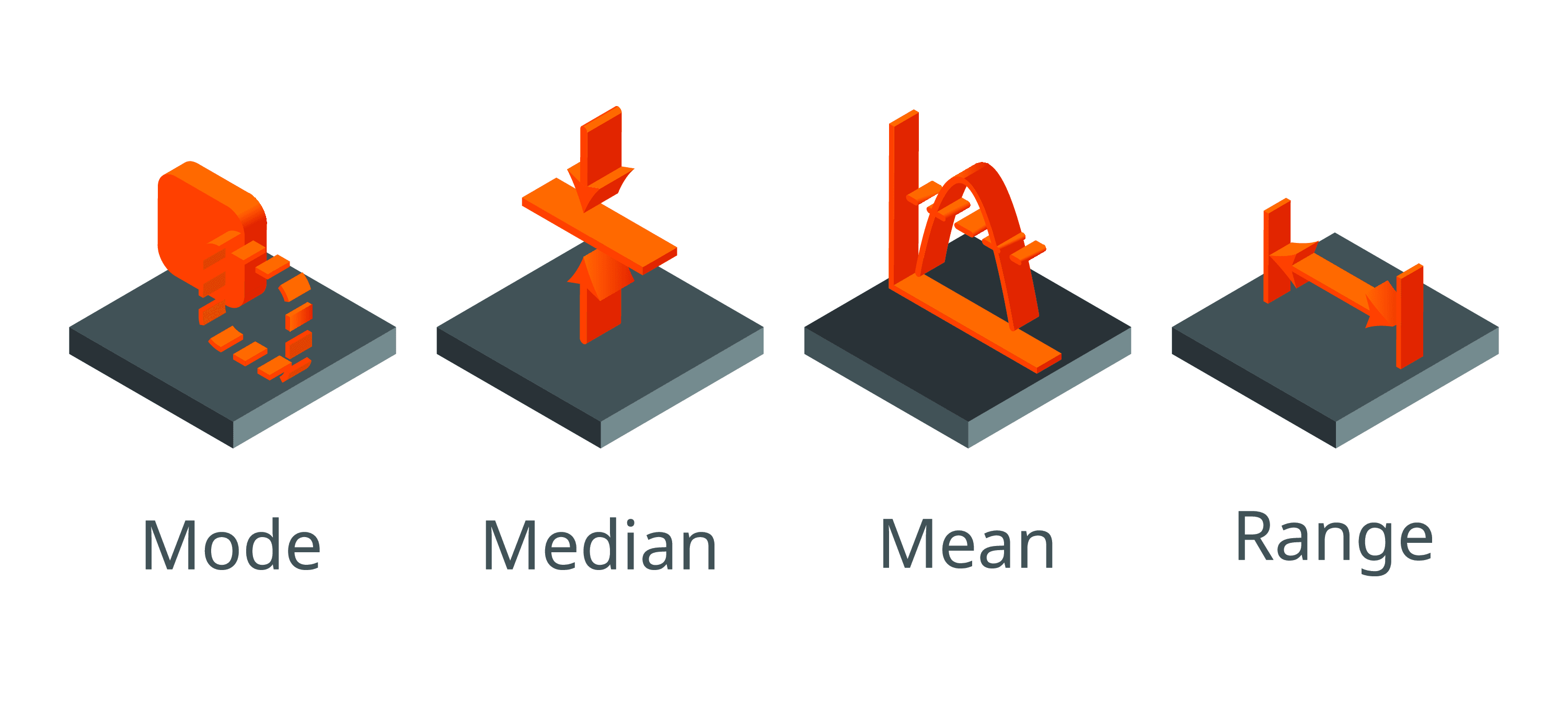A beginner’s guide to interpreting odds ratios, confidence intervals and p-values
Posted on 13th August 2013 by Tim Hicks

Who is it for?
Students of medicine or from the clinical sciences and professions allied to medicine wanting to enhance their understanding of medical literature they will encounter throughout their careers.
What will I learn and how?
How to interpret odds ratios, confidence intervals and p values with a stepwise progressive approach and a’concept check’ question as each new element is introduced.
How long will it take?
Approximately 20 minutes.
What it is not
A statistical textbook reworded or how to calculate any of these statistics.
Contents:
Introduction
Odds ratio
Confidence interval
P value
Bringing it all together – Real world example
Summary
Self test Answers
Introduction
The first steps in learning to understand and appreciate evidence-based medicine are daunting to say the least, especially when confronted with the myriad of statistics in any paper. This short tutorial aims to introduce healthcare students to the interpretation of some of the most commonly used statistics for reporting the results of medical research.
The scenario for this tutorial is centred around the diagram below, which outlines a fictional parallel two arm randomised controlled trial of a new cholesterol lowering medication against a placebo.

Odds ratio (OR)
An odds ratio is a relative measure of effect, which allows the comparison of the intervention group of a study relative to the comparison or placebo group.
So when researchers calculate an odds ratio they do it like this:
The numerator is the odds in the intervention arm
The denominator is the odds in the control or placebo arm = Odds Ratio (OR)
So if the outcome is the same in both groups the ratio will be 1, which implies there is no difference between the two arms of the study.
However:
If the OR is > 1 the control is better than the intervention.
If the OR is < 1 the intervention is better than the control.
Concept check 1
If the trial comparing SuperStatin to placebo with the outcome of all cause mortality found the following:
Odds of all cause mortality for SuperStatin were 0.4
Odds of all cause mortality for placebo were 0.8
Odds ratio would equal 0.5
So if the trial comparing SuperStatin to placebo stated OR 0.5
What would it mean?
A) The odds of death in the SuperStatin arm are 50% less than in the placebo arm.
B) There is no difference between groups
C) The odds of death in the placebo arm are 50% less than in the SuperStatin arm.
Confidence interval (CI)
The confidence interval indicates the level of uncertainty around the measure of effect (precision of the effect estimate) which in this case is expressed as an OR. Confidence intervals are used because a study recruits only a small sample of the overall population so by having an upper and lower confidence limit we can infer that the true population effect lies between these two points. Most studies report the 95% confidence interval (95%CI).
If the confidence interval crosses 1 (e.g. 95%CI 0.9-1.1) this implies there is no difference between arms of the study.
Concept check 2
So if the trial comparing SuperStatin to placebo stated OR 0.5 95%CI 0.4-0.6
What would it mean?
A) The odds of death in the SuperStatin arm are 50% less than in the placebo arm with the true population effect between 20% and 80%.
B) The odds of death in the SuperStatin arm are 50% less than in the placebo arm with the true population effect between 60% and 40%.
C) The odds of death in the SuperStatin arm are 50% less than in the placebo arm with the true population effect between 60% and up to 10% worse.
P values
P < 0.05 indicates a statistically significant difference between groups. P>0.05 indicates there is not a statistically significant difference between groups.
Concept check 3
So if the trial comparing SuperStatin to placebo stated OR 0.5 95%CI 0.4-0.6 p<0.01
What would it mean?
A) The odds of death in the SuperStatin arm are 50% less than in the placebo arm with the true population effect between 60% and 40%. This result was statistically significant.
B) The odds of death in the SuperStatin arm are 50% less than in the placebo arm with the true population effect between 60% and 40%. This result was not statistically significant.
C) The odds of death in the SuperStatin arm are 50% less than in the placebo arm with the true population effect between 60% and 40%. This result was equivocal.
Bringing it all together – Real world example
A drug company-funded double blind randomised controlled trial evaluated the efficacy of an adenosine receptor antagonist Cangrelor vs Clopidogrel in patients undergoing urgent or elective Percutaneous Coronary Intervention (PCI) who were followed up for specific complications for 48 hrs as outlined in the diagram below (Bhatt et al. 2009).

The results section reported “The rate of the primary efficacy end point was … (adjusted odds ratio with Cangrelor, 0.78; 95% confidence interval [CI], 0.66 to 0.93; P=0.005)
What does this mean?
A) The odds of death, myocardial infarction, ischemia-driven revascularization, or stent thrombosis at 48 hours after randomization in the Cangrelor arm were 22% less than in the Clopidogrel arm with the true population effect between 34% and 7%. This result was not statistically significant.
B) The odds of death, myocardial infarction, ischemia-driven revascularization, or stent thrombosis at 48 hours after randomization in the Cangrelor arm were 34% less than in the Clopidogrel arm with the true population effect between 7% and 22%. This result was statistically significant.
C) The odds of death, myocardial infarction, ischemia-driven revascularization, or stent thrombosis at 48 hours after randomization in the Cangrelor arm were 22% less than in the Clopidogrel arm with the true population effect between 34% and 7%. This result was statistically significant.
Summary
This is a very basic introduction to interpreting odds ratios, confidence intervals and p values only and should help healthcare students begin to make sense of published research, which can initially be a daunting prospect. However it should be stressed that any results are only valid if the study was well designed and conducted, which highlights the importance of critical appraisal as a key feature of evidence based medicine.
I do hope you enjoyed working through this and would appreciate any feedback on the content, design and presentational aspects of this tutorial.
Self test Answers
Concept check 1. The correct answer is A.
Concept check 2. The correct answer is B.
Concept check 3. The correct answer is A.
Bringing it all together – Real world example. The correct answer is C.
You may also be interested in these blogs:
Why should students know about kappa value?
Efficacy of drugs: 3 examples to get you to truly understand Number Needed to Treat (NNT)
Key to statistical result interpretation: P-value in plain English
Surrogate endpoints: pitfalls of easier questions
How did they determine diagnostic thresholds: the stories of anemia and diabetes
References:
Bhatt DL, Stone GW, Mahaffey KW, Gibson CM, Steg PG, Hamm CW, Price MJ, Leonardi S, Gallup D, Bramucci E, Radke PW, Widimský P, Tousek F, Tauth J, Spriggs D, McLaurin BT, Angiolillo DJ, Généreux P, Liu T, Prats J, Todd M, Skerjanec S, White HD, Harrington RA. CHAMPION PHOENIX Investigators. (2013). Effect of platelet inhibition with cangrelor during PCI on ischemic events. N Engl J Med. Apr 4;368(14):1303-13.




No Comments on A beginner’s guide to interpreting odds ratios, confidence intervals and p-values
Excellent. Big thank you
23rd November 2022 at 3:47 pmVery helpful information.
7th November 2022 at 2:51 pmThank you
This just made all of this statistical jargan make sense and click. Better than any description I could find in a text book! Thank you!
14th June 2022 at 3:15 amThat’s great to hear, Shannon, thank you for your feedback!
15th June 2022 at 4:02 pmYeah. But what do you meant by effect? The treatment arm in 1 for example occurred in .6 to .4 of the population???? That is what I understod.
2nd September 2021 at 1:16 amThank you very much for posting this tutorial. I am studying a postgrad certificate in Oncology Nursing. Now I am more confident analysing RCTs!
11th August 2021 at 10:21 amExcellent easy to understand presentation than any book on statistics
5th August 2021 at 7:55 pmhi Tim,
I am having challenges interpreting this table. Can you please help.
Smoking-related
change versus no
change
AOR (95% CI)
Education
Above secondary education Ref:
No formal education 1.22 (0.66-2.25)
Secondary education 1.69 (1.07-2.67)
p=0.03
If you have time to look at the whole table (Table 4) ,please find the paper below:
Impact on Smoking Behavior of the New Zealand Annual Increase in Tobacco Tax: Data for the Fifth and Sixth Year of Increases.
22nd July 2021 at 4:32 pmJudy Li PhD1, Rhiannon Newcombe PhD1,Hayley Guiney MSc1,Darren Walton PhD
Hi Tim,
2nd May 2021 at 11:56 amIs it possible to get an odds ratio of 1? What does it mean?
Good Articel and information, thanks for sharing
7th November 2020 at 12:11 amGood day, regarding the Confidence interval, i cannot understand the concept of “the true population effect between % and %. Could you please explain better? Thank you so much.
22nd June 2020 at 12:56 pmHello Tim
Could you please help with the below?
Data shows that P-value at 95 % of CI shows significant difference and also the ᵡ2-value at degree of
freedom 1 shows significant difference in reference to age because table value of ᵡ2 at 95 % of CI is 3.84 but
calculated value is 5.83 which are very greater.
What is the P-value and CI?
Many thanks
27th April 2020 at 8:13 amAminata Diane
Hi Tim,
1st November 2019 at 10:55 pmThank you very much for this article! This is what I have been looking for.
Thank you for making it so simple that without a mathematical background I could understand and interpret Odd ratios and CI now. It was extremely helpful.
Please can you help me interpret this odd ratio for a cross-sectional study? OR 1.26 (1.02-1.56) for underweight among women and decreased rainfall?
Or is the interpretation for odd ratios in a cross sectional study same as those in randomized controlled trials?
Thank you Tim.
Patience
You’ve really helped me out! Doing a PhD in health science with a qualitative background is proving much harder than initially anticipated! This summary makes everything seem much more manageable :D
3rd September 2019 at 3:35 pmThat’s great to hear Niamh! Good luck with the PhD and point your friends towards the blog too if you think they may need it!
4th September 2019 at 11:10 amHow to calculate adjusted OR manually?
16th June 2019 at 11:44 amit interesting topics you addressed! in future I hopefully keep you to introduce about how to calculate p value and as well how to inter prate two confidence intervals with a given odds or risk ratio
15th April 2019 at 3:32 pmI think it’s an excellent introductory tutorial.
22nd February 2019 at 2:36 pmThanks a lot.
That is great, how I wish you keep sending me such tutorials in ppt or pdf formats. I have been inspired as such I would wish to learn more from you. I am a health professional as well eyeeing to become the health systems specialist one day. Currently, I have a BSc in health systems management obtained within my country pending to pursue Ma in health & BCC not started yet. Keep in touch even privately if that’s ok with you. If it’s paying for these tutorials later, count me in because making full use of your presentations would enable me sail through my further studies with ease. I have just liked everything in short.
20th February 2019 at 5:32 pmThank you this is exactly what I was hoping to find- v useful for a quick review.
8th February 2019 at 12:32 pmThanks for commenting Charlotte – really glad you found it so useful.
12th February 2019 at 9:44 amhelo sir m a resident and having difficulty in understanding one graph will u please help me understand
26th December 2018 at 6:28 amEstimated median difference,
21.6 percentage points (95% CI, 6.7–34.8)
P=0.005. it is published in nejm as Effect of Cannabidiol on Drop Seizures in the Lennox–Gastaut Syndrome
Hello Tim,
I am a PhD student in Health Promotion field, currently working on a systematic review of prognostic factors influencing recovery from proximal humerus shoulder in adults. I do not have a strong background in statistics and a in a trouble to analyze data re: identified predictors from 15 included studies. As you know, studies have different scale and it is hard for me to summarize the figures in a consistent way. Do you have any suggestion for me? thanks a lot.
15th December 2018 at 12:30 pmHi Azar, Just in case Tim does not see your message, I have a suggestion for where you may want to start your search. The first module of the Cochrane Interactive Learning modules is free to access and can be found here: https://training.cochrane.org/interactivelearning/module-1-introduction-conducting-systematic-reviews. Obviously this is targeted towards carrying out a Cochrane systematic review, but may be useful (as would the link to the Cochrane Handbooks: https://training.cochrane.org/handbook). Has your supervisor been able to point you towards any suitable resources? We have several links on the S4BE library which may prove useful too: https://www.students4bestevidence.net/library/
I hope this helps initially with your question. Best wishes, Emma.
17th December 2018 at 9:23 am